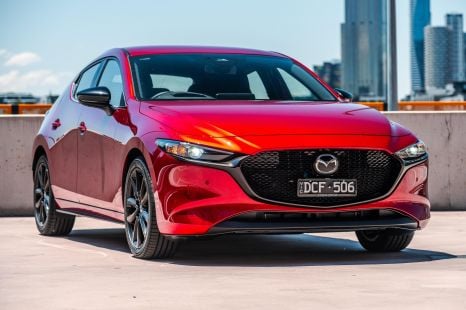

Josh Nevett
30 Days Ago
This is the closest you’ll get to a Lexus without paying Lexus money – it’s the Toyota Camry SL HEV, and it’s really, really good..
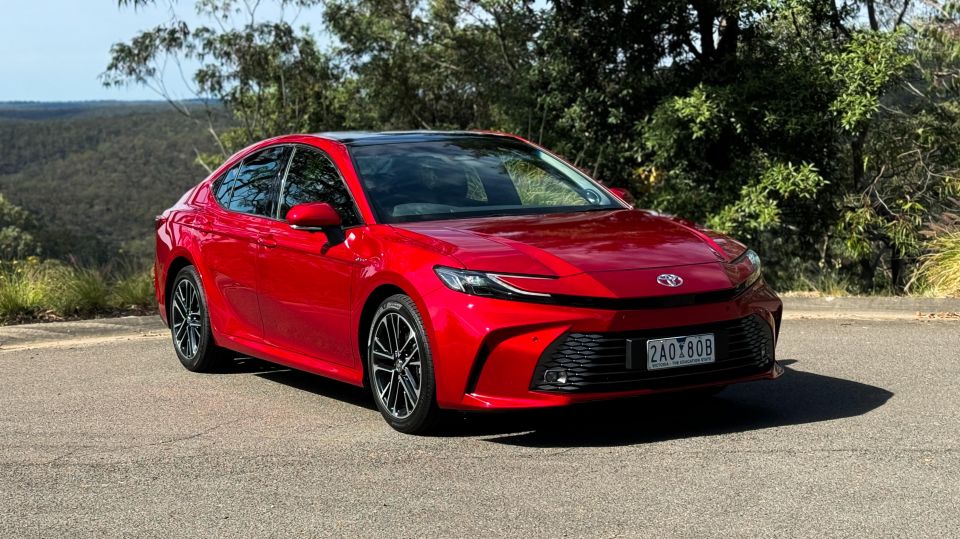
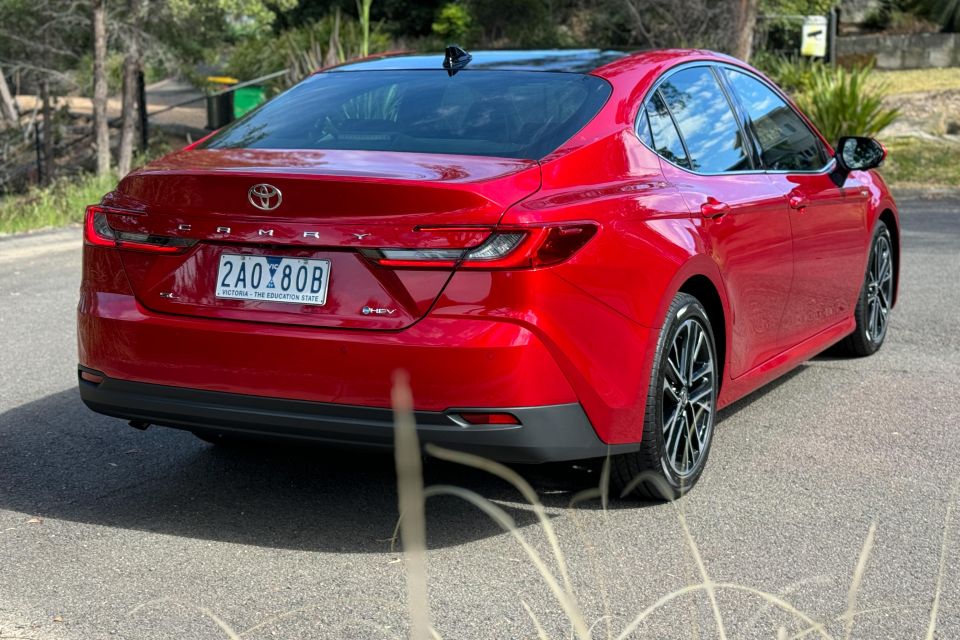

Quickly see how this car stacks up against its competition. Select any benchmark to see more details.
Take advantage of Australia's BIGGEST new car website to find a great deal on a Toyota Camry.
My partner drove the Toyota Camry SL hybrid tested here and didn’t want to give it back. She’s not a car person, but she is exposed to more new cars than most – and when I asked her what she thought it was worth, she answered with a guess of “about $70,000?”
WATCH: Paul’s video review of the 2025 Toyota Camry Ascent Sport
Right. That gives you an idea of how good this new-generation Camry SL ‘HEV’ is, and what it feels like… that is, it feels far more expensive than it is.
And it’s not cheap. At $53,990 plus on-road costs, it’s the most expensive new Camry ever sold in Australia.
So does it really live up to the price tag? I’ll give you the actual car-person qualified-expert review, so read on!
All Camry variants in the new-generation range are petrol-electric hybrids, but Toyota has moved away from ‘hybrid’ as the marketing term, towards the term ‘HEV’ (for hybrid-electric vehicle), as is popular in Europe.

But no matter which way you look at it, the new-generation Camry line-up – slimmer, and HEV-only – is more expensive than ever before. It’s also better equipped, too, especially in this high-grade SL trim.
| Model | Price before on-road costs |
|---|---|
| 2025 Toyota Camry Ascent | $39,990 |
| 2025 Toyota Camry Ascent Sport | $42,990 |
| 2025 Toyota Camry SL | $53,990 |
To see how the Toyota Camry stacks up against its rivals, check out our comparison tool
It certainly looks and feels a bit more special than the lower-grade versions. I had direct context for that, having jumped from the entry-level Ascent into this flagship SL.
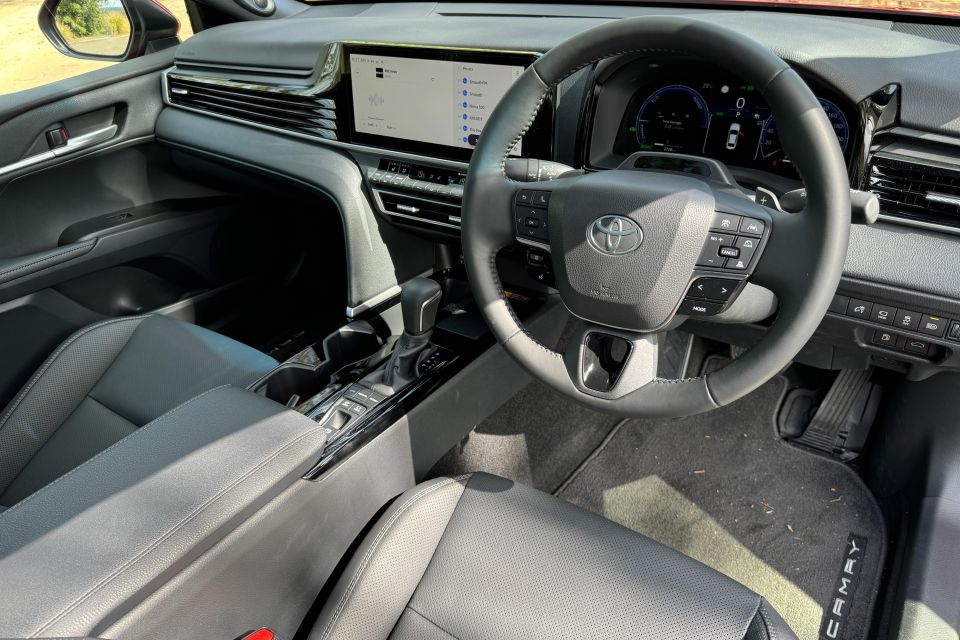
The panoramic glass roof is welcome, and despite the fact it has a structural pillar intersecting the glass, it does add a lot of light to the cabin. In the lower grades, the black headlining can make it feel a bit gloomy in there.
And while the leather seat trim is hardly adventurous in terms of the finishing and trim design, the seats are comfortable, easily adjustable, and the driver’s seat memory settings will be welcome for those who share with a shorty.
It maybe doesn’t quite feel as special inside as some other vehicles for this kind of money. The finishes are a bit safe, but it’s a Camry, so I guess that’s okay?
The 12.3-inch touchscreen media system is fine, but I’m still not convinced it has the best menu structure compared with rival systems. There are some hidden controls (like the audio settings, which aren’t where you’d expect them to be), and the fact the car has connected services means there are often ‘Notifications’ popping up, which can be frustrating.
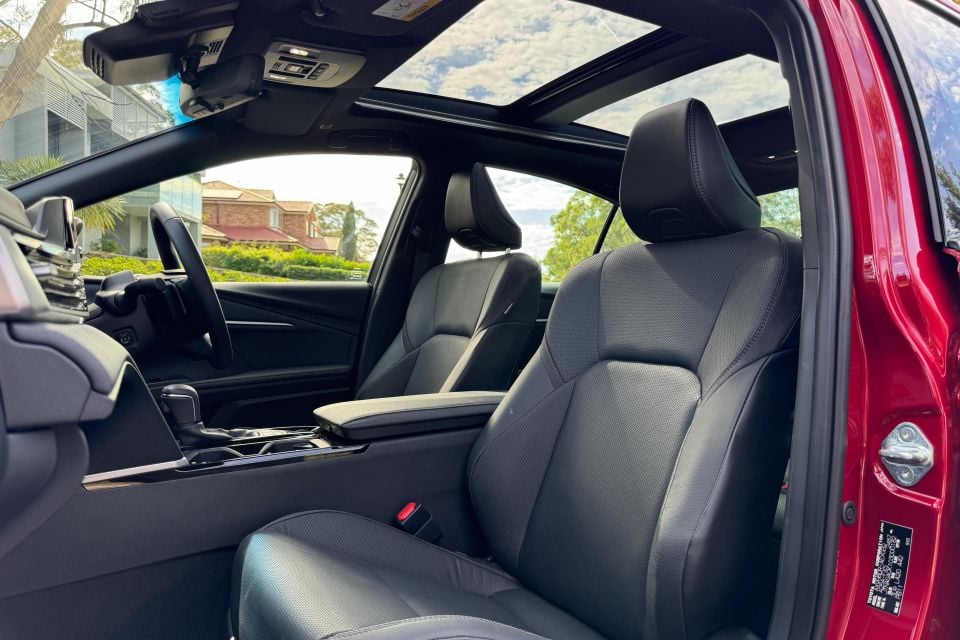
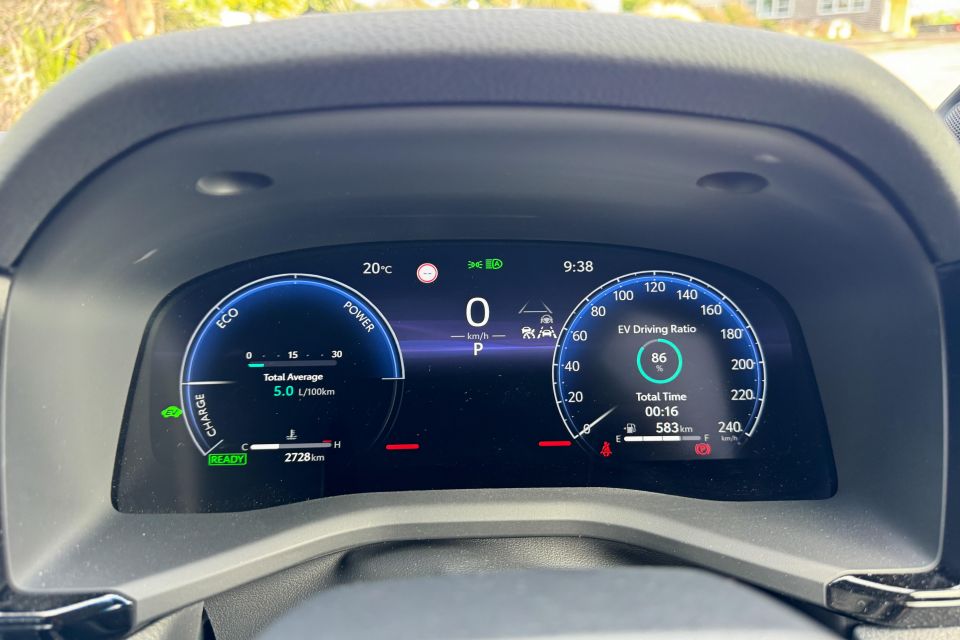
If you’re like me, and you’re likely to just rely on wireless Apple CarPlay to pick up your phone each time you get back in, you should be happy. It worked flawlessly for me for a week.
And there’s a physical volume knob, as well as simple steering wheel controls, too.
Below the media screen is also a bank of buttons (hallelujah) for climate controls, seat heating and cooling, and steering wheel heating. I was so happy that these carried over, and weren’t relegated to an on-screen display.
On the topic of displays, there’s a 12.3-inch driver information screen that changes ‘character’ with the drive mode (red for Sport, grey for Normal, and green for Eco), and otherwise there’s a wealth of information on screen including digital speedo, safety tech controls and more.
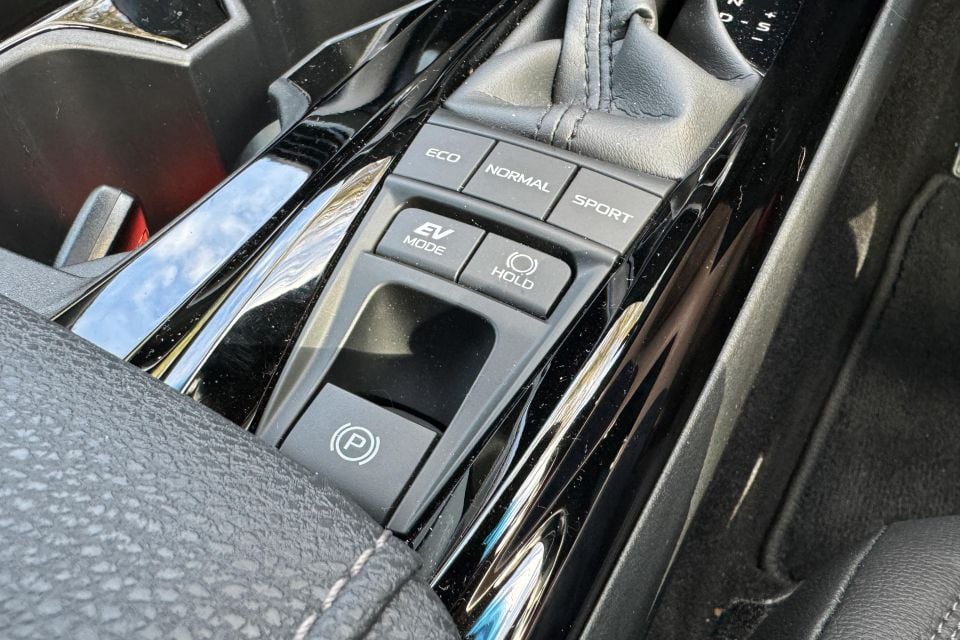
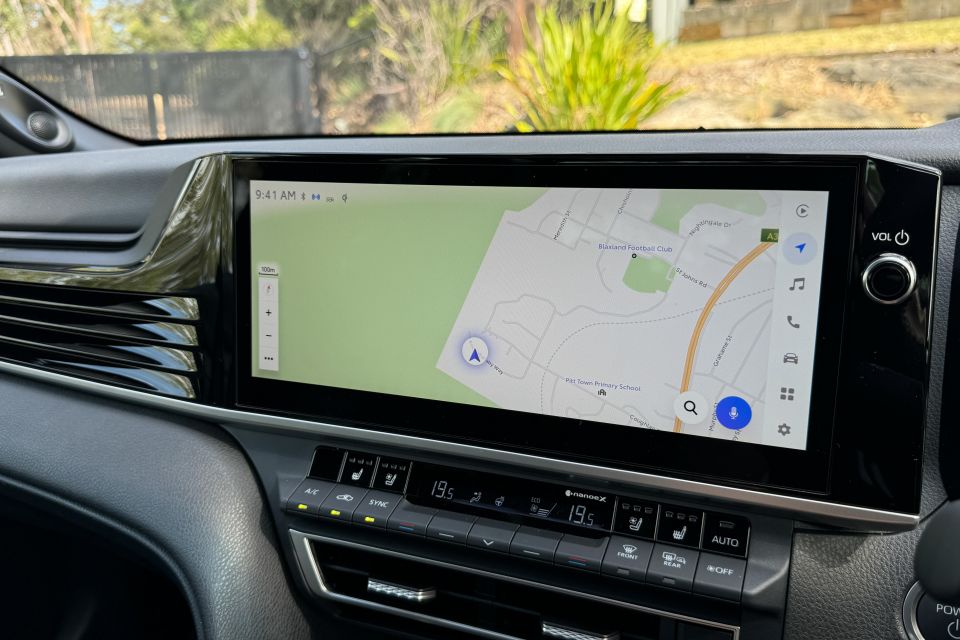
Charge ports abound, with five USB-C jacks across the two rows, and there’s a wireless phone charger in this top Camry grade.
There is good storage up front, including large bottle holders in the doors, a pair of cupholders that are just about perfect for a take-away coffee, and a small caddy alongside the wireless charge pad, too.
Backseat space is ample for a six-foot/182cm adult like me to sit behind their own driving position with reasonable foot, knee and headroom. Three across might be a touch squeezy as there’s still a large transmission tunnel in the way.
There are ISOFIX child seat anchors in the window seats, and three top-tether points across the parcel shelf. And while it’s barely a big issue, I found it very difficult to unlatch a seat, because of the shape of the attachment point.

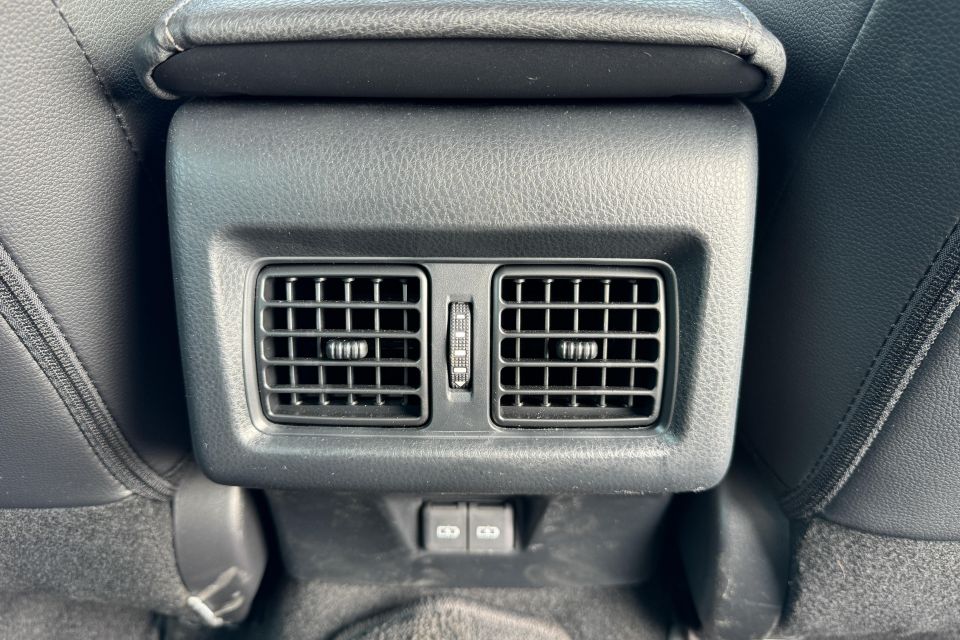
Amenities are great in the second row, with directional air vents, the aforementioned charge points, map pockets on the seatbacks, and large door pockets. And there are well positioned LED lights in the rear, too.
Now, when it comes to the Camry’s boot, it’s big – 524 litres of cargo capacity with the rear seats in place, and that’s easily enough to cop a week’s worth of luggage for a small family.
However, if you want to load longer and wider items in, you’ll need to be mindful of the limitations of the cargo area, as it’s not as practical as a boxy SUV.
It really made me wish the new Camry came as a wagon like those of old. It would be so much more practical with a liftback and that extra load height and width.
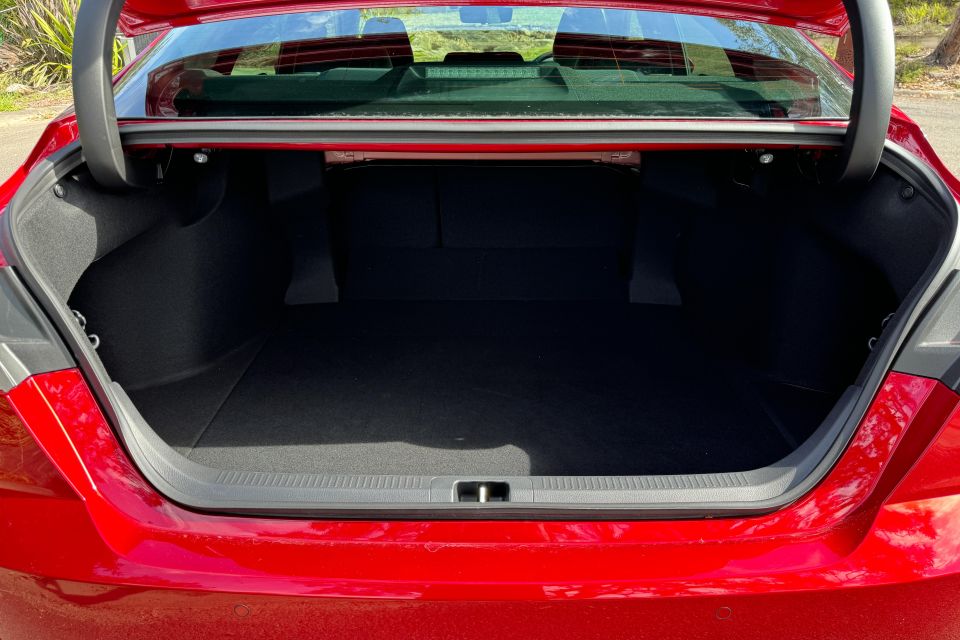
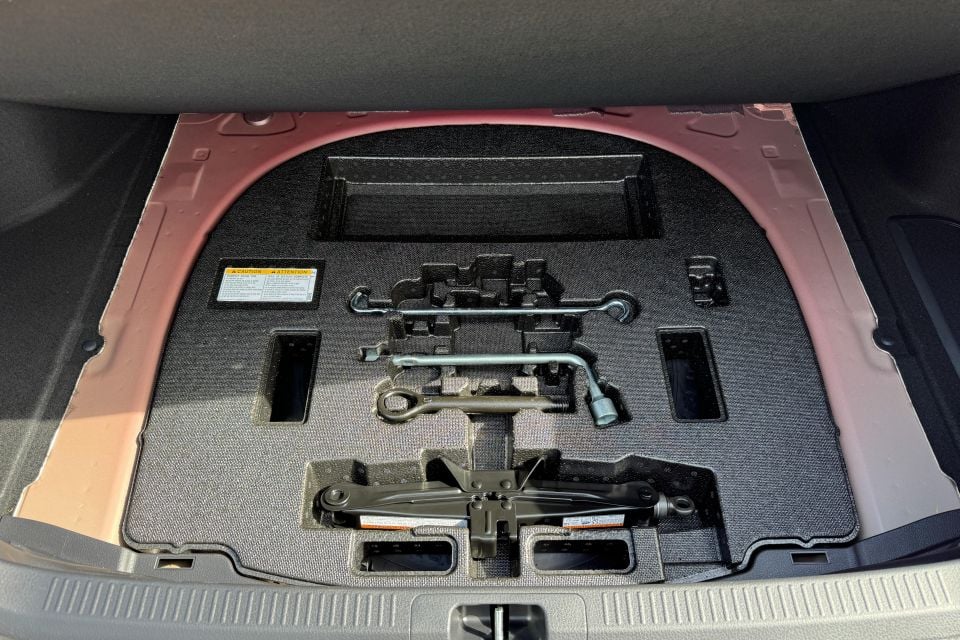
However, there are still shopping bag hooks, and you can lower the seat backs using the trigger pulls in the boot – but they don’t fold the seats down for you.
Thanfully, there is a space-saver spare tyre under the boot floor.
As in the previous model, Toyota doesn’t state a combined torque figure for its 2.5-litre four-cylinder petrol-electric powertrain, but there have been some changes.
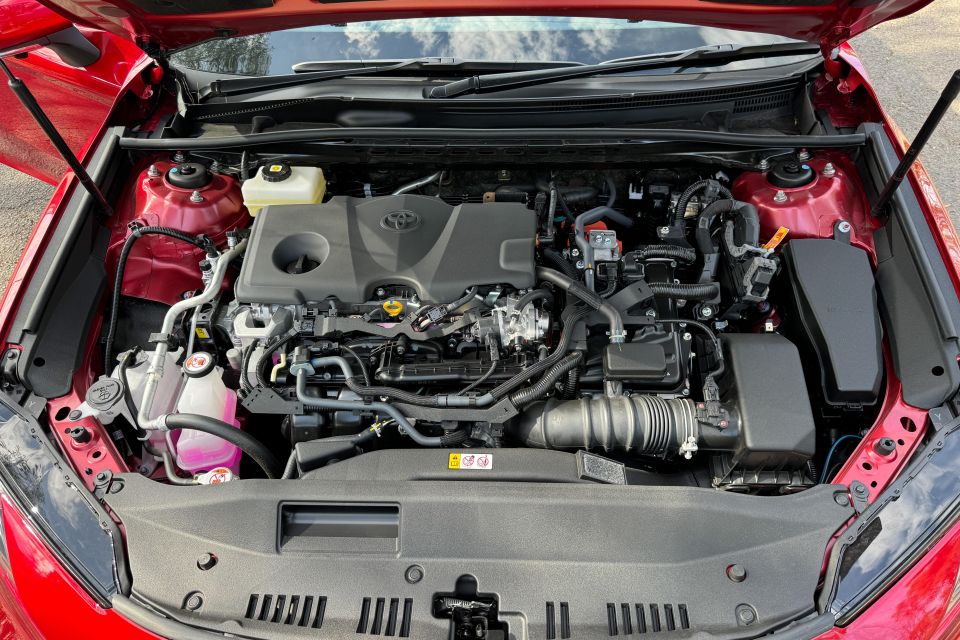
Indeed, this is Toyota’s first model in Australia with the brand’s fifth-generation HEV system, which is more powerful, and offers better claimed efficiency than its predecessor.
| Specifications | Toyota Camry |
|---|---|
| Engine | 2.5L 4cyl hybrid |
| Engine outputs | 138kW 221Nm |
| Electric motor outputs | 100kW 208Nm |
| System outputs | 170kW |
| Battery | 4.0Ah li-ion |
| Transmission | CVT |
| Driven wheels | FWD |
| Weight | 1625kg (kerb) |
| Fuel economy (claimed) | 4.0L/100km |
| Fuel economy (as tested) | 4.6L/100km |
| Fuel tank capacity | 50L |
| Fuel requirement | 95 RON |
| CO2 emissions | 91g/km |
| Emissions standard | Euro 6 |
| Braked tow capacity | 400kg |
On test, over a few hundred kilometres of mixed driving – city, urban, highway, freeway and open roads – I saw an average of 4.6 litres per 100km on the driver info display.
The big consideration here, though, is that it requires 95RON premium unleaded this time around, which does add some extra cost at the servo.
It has a 50-litre fuel tank capacity, which means – based on my consumption – it should clear 1080km per fill!
To see how the Toyota Camry stacks up against its rivals, check out our comparison tool
The new-generation Camry range refines what was already a very good drive experience.
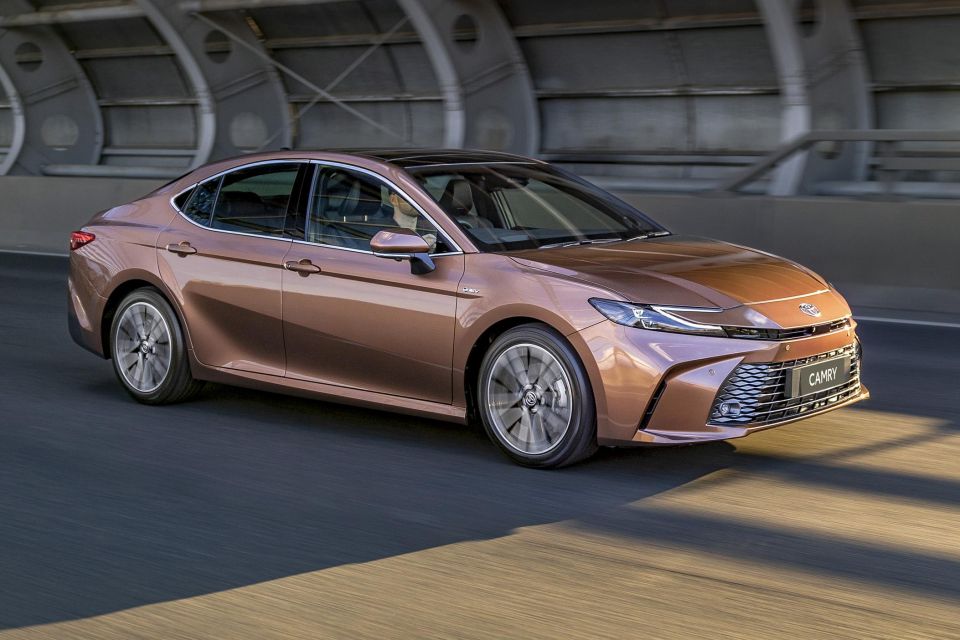
It’s a low-slung sedan, and that in itself is a bit of a peculiar element to the way it drives. You slink into the driver’s seat, and there were more than a few instances when I thought the bumpers would bottom out on speed humps and driveways, but they didn’t.
There are many impressive facets to the drive, but I particularly liked the ride comfort and body control.
Over mixed surfaces and at different speeds, it never felt flummoxed or uncomfortable, and the way the suspension composes itself after a big lump or small sharp-edged bump is really impressive.
The steering is well-suited to this type of car, too. It’s not super fast or ultra intentful, but it is accurate, nicely judged in terms of weighting, and fun enough for it to be a bit of a laugh on a windy stretch of road, or even just weaving through roundabouts.
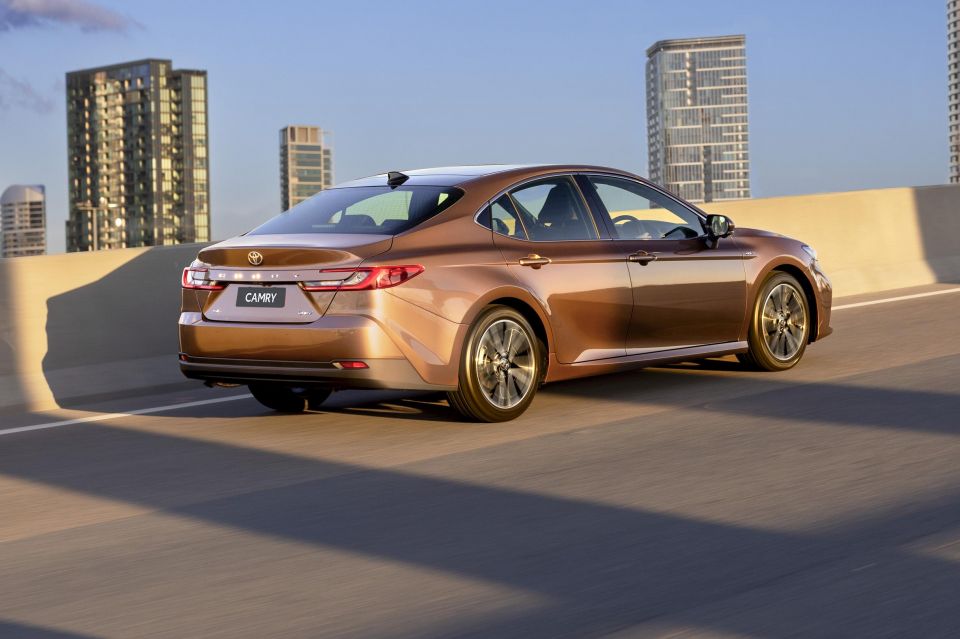
The extra power is noticeable from the powertrain. I spent a lot of time in the last Camry over the years, and you can feel the extra oomph from the hybrid powertrain when you really get into it.
But what’s more impressive is its ambitious use of EV mode – typically in previous-gen Toyota hybrids, the engine would kick in loudly when I reversed out of my driveway and down the hill before taking off at home, but in this instance, it could do it all in EV mode.
Toyota is still the benchmark for hybrid powertrain management, too – the engine, transmission, electric motor and battery all work together seamlessly, with a smooth yet still potent experience when you need it. And it’s all quieter than it was in the previous model, too.
Honestly, there’s not a whole lot to complain about when it comes to the drive experience, apart from a little bit of road noise intrusion at freeway speeds on coarse-chip surfaces.
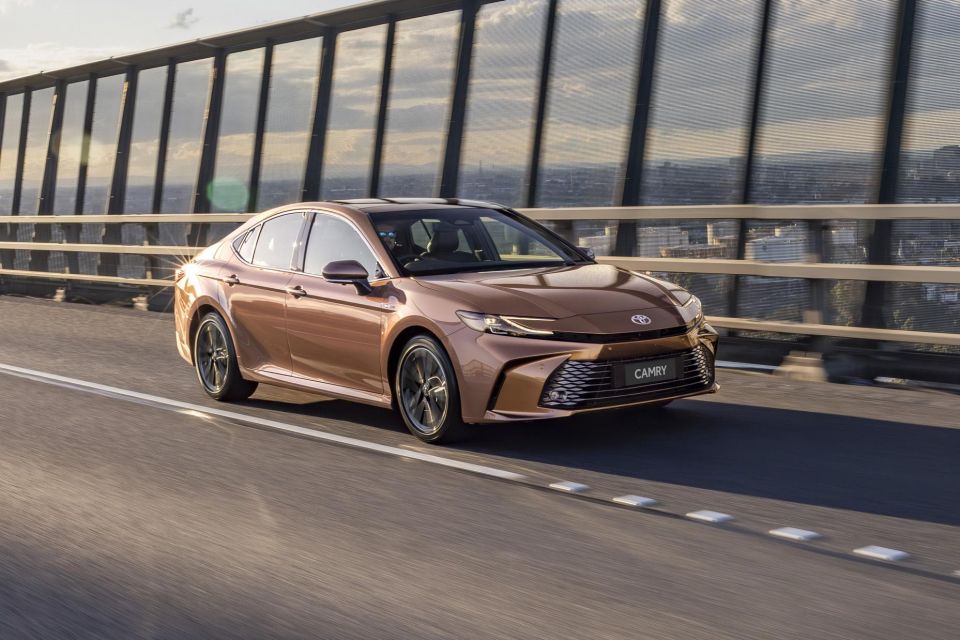
And even the safety systems are pretty good. There’s a driver monitoring system that doesn’t get it wrong and a lane-keeping system that isn’t overzealous. And the digital rear-view mirror camera system is a lovely addition, too.
Maybe the only criticism is that the adaptive cruise control is a bit too cautious with its gaps; it even brakes to let people merge in that are a long way ahead of you. How dare it be so courteous?!
This section will help you figure out whether this SL model is the one to go for, or not.
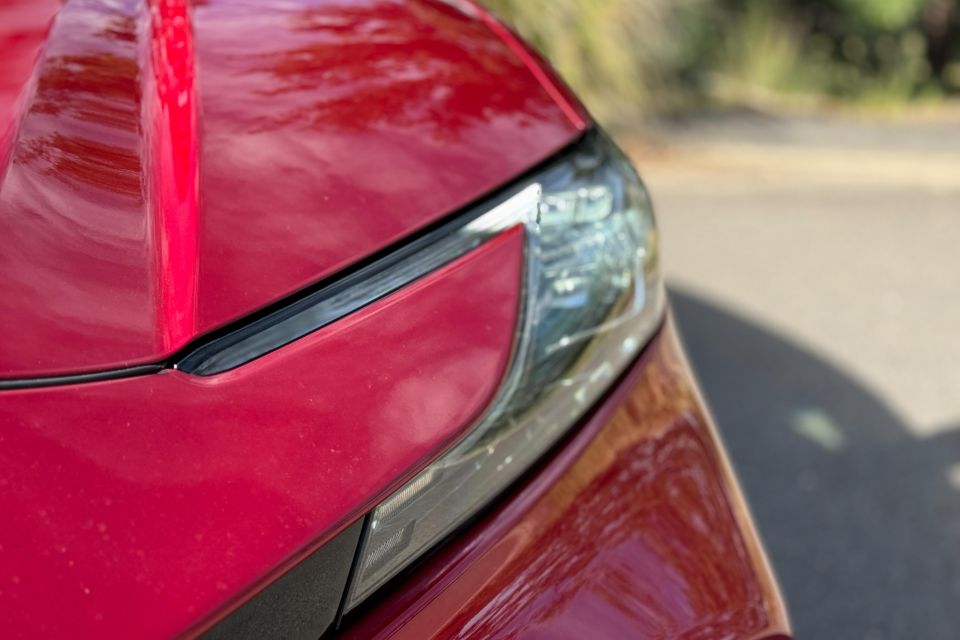

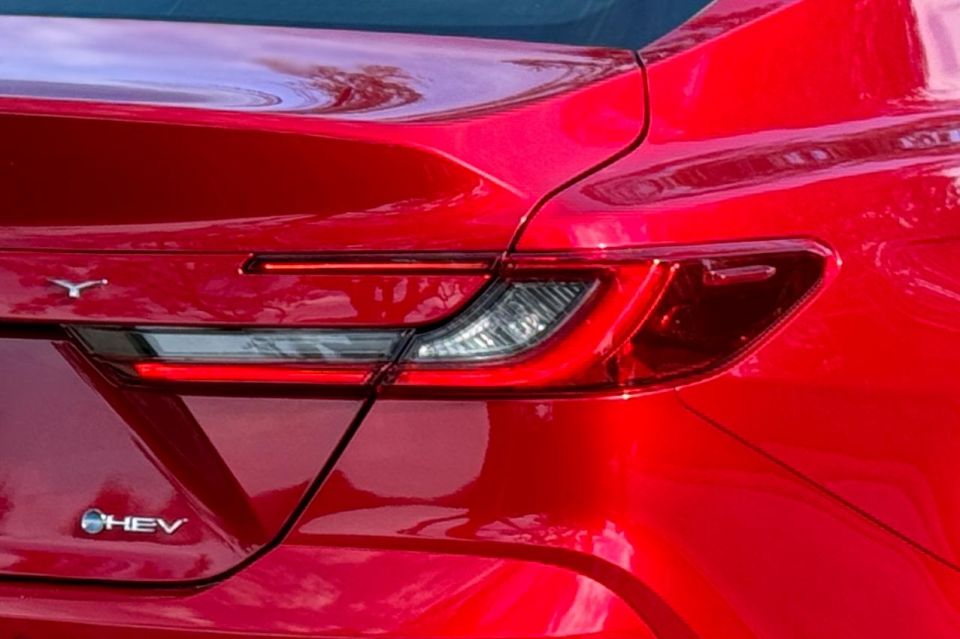

Toyota Camry Ascent highlights:
Ascent Sport adds:
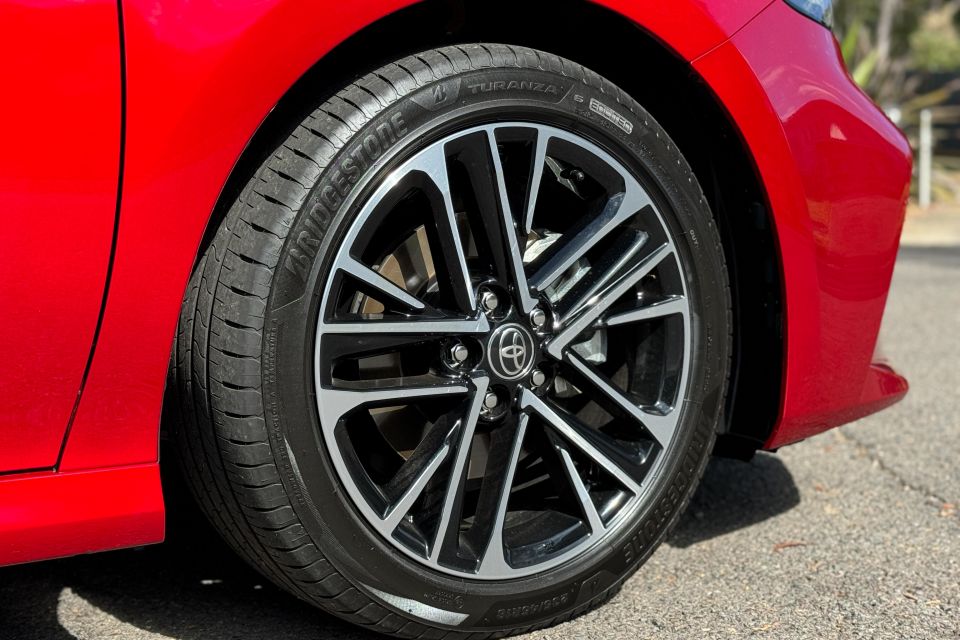
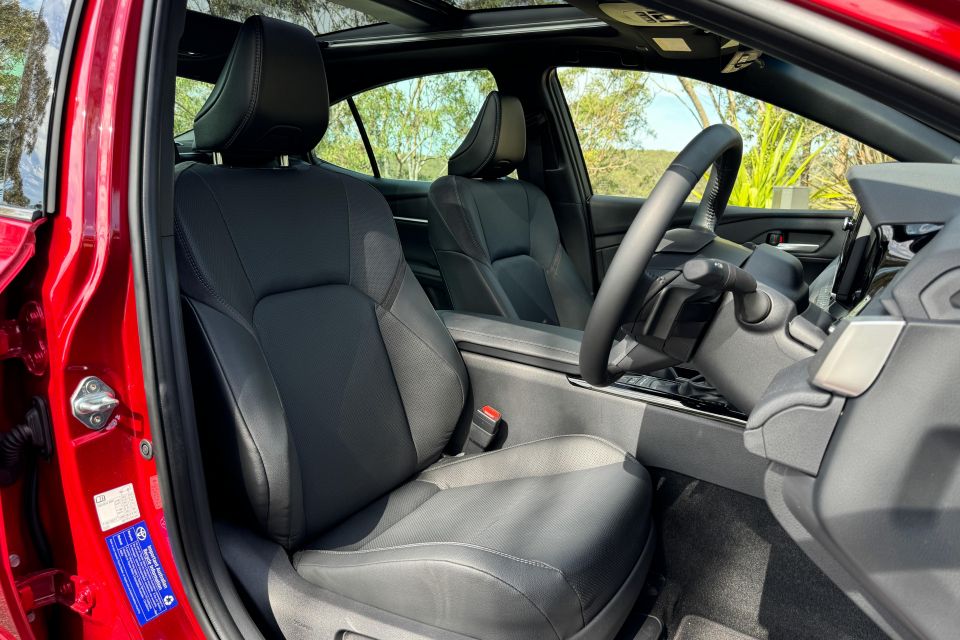
SL adds:
To see how the Toyota Camry stacks up against its rivals, check out our comparison tool
You bet it is. It has a five-star safety rating from ANCAP, based on testing conducted in 2024.
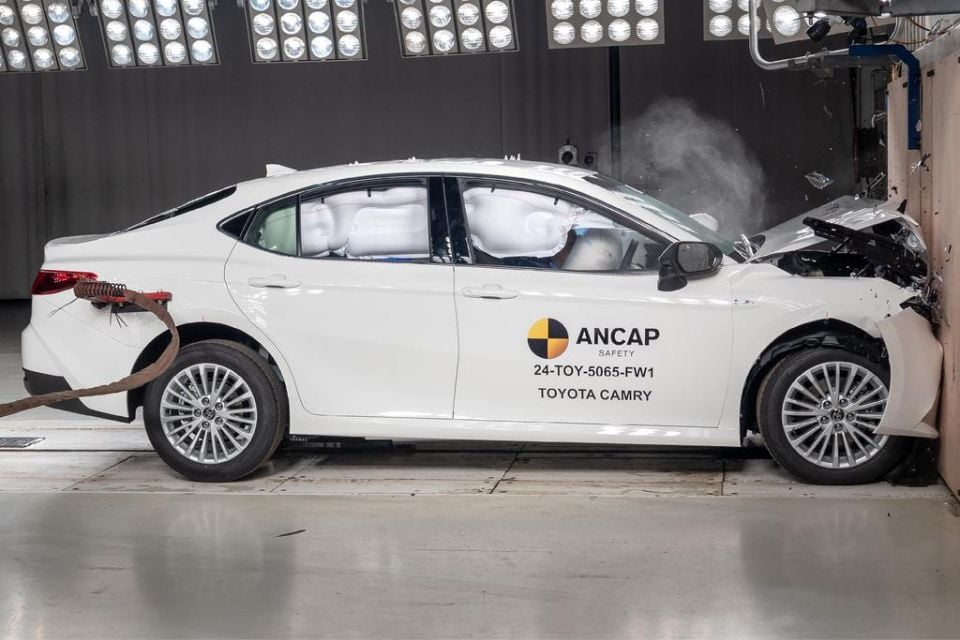
Find out more about the car
In that testing it received an adult occupant protection rating of 95 per cent, a child occupant protection rating of 87 per cent, a vulnerable road user protection rating of 84 per cent, and a safety assist rating of 81 per cent.
Standard safety equipment includes:
All versions have a reversing camera, and a surround-view camera system, as well as front and rear parking sensors. If you spend up to the SL you get camera washers front and rear, too.
There are eight airbags fitted – dual front, driver’s knee, front centre, front side, and full-length curtains
It runs on the smell of an oily rag, in terms of petrol consumption. Just remember that it has to be the good gas…

But in terms of the other ongoing ownership considerations, it promises a reliable experience. This hybrid tech has stood the test of time and terror over the years, and Toyota backs its models with good warranty cover.
There’s a five-year, unlimited-kilometre warranty plan for private buyers, and if you service the vehicle on time (at Toyota, or elsewhere), you’ll get seven years of powertrain warranty cover as well.
Plus, if you do decide to service with Toyota, you’ll get 10 years of high-voltage battery warranty cover, too.
There is a capped-price servicing plan for the Camry, with the first five visits covered at an impressively low rate:
| Service interval | Price |
|---|---|
| 12 months/15,000km | $255 |
| 24 months/30,000km | $255 |
| 36 months/45,000km | $255 |
| 48 months/60,000km | $255 |
| 60 months/75,000km | $255 |
| Total | $1275 |

The only thing that you don’t get with Toyota is roadside assistance, which you can pay extra for if you want.
The other cost you might want to consider is the Toyota Connected Services program.
There’s a smartphone app that can show you info like odometer, fuel gauge, distance to empty, last-known vehicle location, recall info, and more, but if you’d like the advantage of stolen vehicle tracking, remote vehicle locking and unlocking for the doors/boot, plus remote engine start, you’ll need to pay extra for it after your first 12 months of ownership ($9.95 per month!).
There’s also an online sat-nav system with an online-connected voice assistant, which is free for 12 months, but costs $12.50 per month thereafter. Rude.
To see how the Toyota Camry stacks up against its rivals, check out our comparison tool
It’s hard not to be impressed by the latest Camry, and if you are the sort of buyer who wants an efficient, well equipped and enjoyable car, the SL makes a rock-solid case.
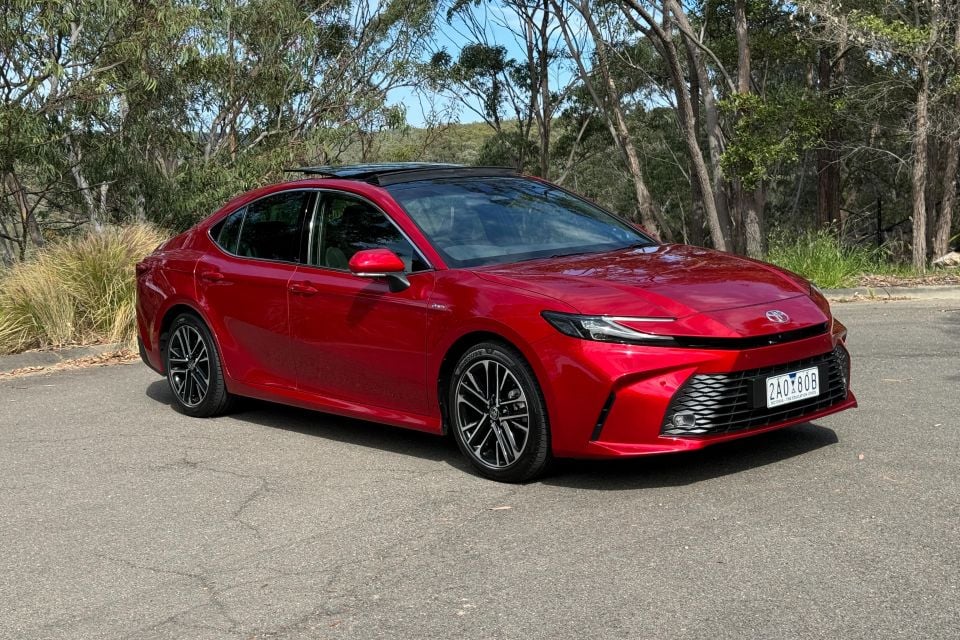
It is more mature, comfortable, considered and confident in terms of its specs and tech, and for those who can live with the sedan body style, it’s a winner.
Interested in buying a Toyota Camry? Get in touch with one of CarExpert’s trusted dealers here
Click the images for the full gallery
MORE: Everything Toyota Camry
Take advantage of Australia's BIGGEST new car website to find a great deal on a Toyota Camry.
Matt has more than a decade of experience in automotive journalism, and loves exploring the pros and cons of new cars, delving into deep-dive industry stories, and going for a drive just for the fun of it.


Josh Nevett
30 Days Ago
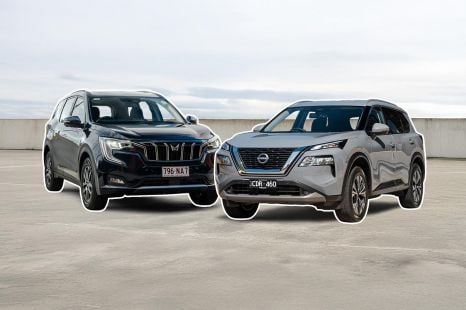

Andrew Maclean
26 Days Ago
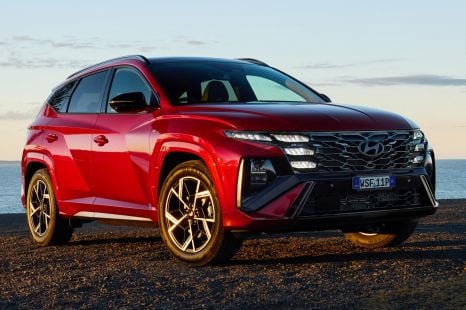

James Wong
26 Days Ago
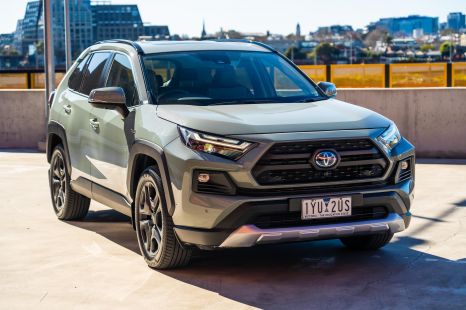

Marton Pettendy
10 Days Ago
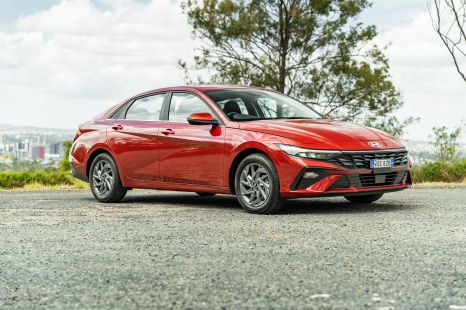

Marton Pettendy
9 Days Ago


Josh Nevett
9 Days Ago